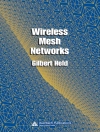Genetic Programming Theory and Practice III provides both researchers and industry professionals with the most recent developments in GP theory and practice by exploring the emerging interaction between theory and practice in the cutting-edge, machine learning method of Genetic Programming (GP). The contributions developed from a third workshop at the University of Michigan’s Center for the Study of Complex Systems, where leading international genetic programming theorists from major universities and active practitioners from leading industries and businesses meet to examine and challenge how GP theory informs practice and how GP practice impacts GP theory. Applications are from a wide range of domains, including chemical process control, informatics, and circuit design, to name a few.
Tabla de materias
Genetic Programming: Theory and Practice.- Evolving Swarming Agents in Real Time.- Automated Design of a Previously Patented Aspherical Optical Lens System by Means of Genetic Programming.- Discrimination of Unexploded Ordnance from Clutter Using Linear Genetic Programming.- Rapid Re-Evolution of an X-Band Antenna for Nasa’s Space Technology 5 Mission.- Variable Selection in Industrial Datasets Using Pareto Genetic Programming.- A Higher-Order Function Approach to Evolve Recursive Programs.- Trivial Geography in Genetic Programming.- Running Genetic Programming Backwards.- An Examination of Simultaneous Evolution of Grammars and Solutions.- The Importance of Local Search.- Content Diversity in Genetic Programming and Its Correlation with Fitness.- Genetic Programming Inside a Cell.- Evolution on Neutral Networks in Genetic Programming.- The Effects of Size and Depth Limits on Tree Based Genetic Programming.- Application Issues of Genetic Programming in Industry.- Challenges in Open-Ended Problem Solving with Genetic Programming.- Domain Specificity of Genetic Programming Based Automated Synthesis: A Case Study with Synthesis of Mechanical Vibration Absorbers.- Genetic Programming in Industrial Analog CAD: Applications and Challenges.












